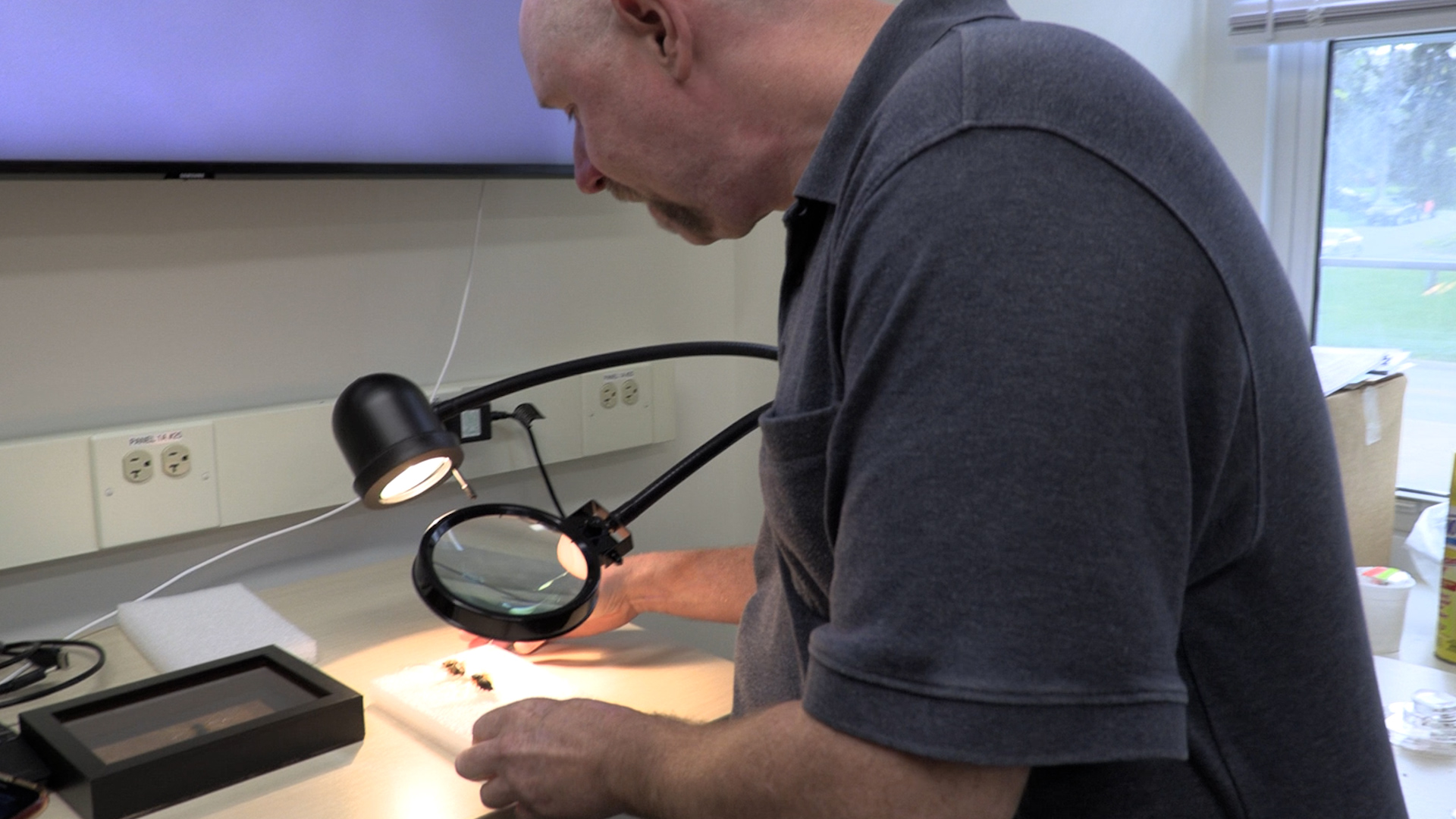By Mary Doyle, Fort Meade Public Affairs Office

Brood X in 2021
Right now, nestled among the tree roots in your backyard, cicadas are feeding on sap and hitting the snooze alarm, biding their time until it is warm enough for them to wake up and crawl to the surface.
This year is significant because scientists say this brood of cicadas will be the largest to ever emerge. They are calling them Brood X and say there will be billions of them. Some estimates say there could be as many as a million and a half cicadas per acre.
“Brood X or ten, is the biggest one by far to all the other broods,” said James Butler, a medical entomologist with Medical Command’s Public Health Command Atlantic, located on Fort Meade. “The [cicada] population grew more than any of the other cycles after many, many years of development. It’s a fun entomological phenomenon that this particular year is just so big.”
All cicadas are on a 13 or 17 year development cycle, and some cicadas are around almost every year. Butler says when the ground temperature reaches about 65 degrees, the cicadas will rise to the surface according to their brood’s clock cycle.
Once above ground, they’ll latch onto trees at about the three or four foot level, then take a few minutes to shuck off their outer shell and unfurl their wings. “They emerge from the outer shell, then take a little while to pump up,” said Butler. “Once their bodies sort of harden, they start flying around.”
If you live in a wooded area, you may see scores of the outer husks laying around. That debris could be a first indication of just how many cicadas you may have in your area.
“Typically, if you’re seeing the husks, you will hear them as well from the tree tops,” said Butler.
The male cicada attracts females with a loud twilling sound made from their bulbous tail ends which they shake. The noise can be very loud and incessant.
“When I first came here in 2004, I was accustomed to the sounds the cicadas in south Texas made, where the sound ramps up and then goes down,” said Butler. “I was unprepared for the constant background noise of these cicadas.”
That noise means mating season is on. Once they mate, the females get to work. “Females lay eggs in tiny slits they make in small tree branches,” said Butler. “Not long after the eggs are laid, all of the cicadas who had emerged, die off. The whole process takes about six to eight weeks.”
Butler said, like most things in nature, cicadas have natural predators. As each of the 13 and 17 year cycles emerge, predators will thin out the herd. Everything from squirrels to raccoons, foxes and birds of every stripe, will eat their fill. Somehow, this particular group of 17-year periodical cicadas grew to the point where that thinning diminished over time, leaving more and more cicadas alive to breed. Each 17 years, this particular herd just keeps getting bigger and bigger and bigger.
Butler says cicadas don’t swarm. They don’t act like locusts and they aren’t destructive. “There won’t be clouds of them in the sky,” Butler said.
Cicadas don’t bite and if your dog or cat eat a few, they won’t get sick. “People actually eat them,” said Butler. “You can go online and find lots of recipes.” According to some sites, cicadas are touted as being full of protein, low in fat and carbohydrates and gluten free.
One thing you shouldn’t do is try to kill them with pesticides.
“By the time you’re spraying them, they’ve already mated and laid eggs,” Butler said. “There’s no need to try to kill them when they will die off naturally in a short time.”
If you have very small or young trees, you might want to cover them with burlap. When the female cuts a slit in the ends of branches, they can cause “flagging” which is when the very tips of branches brown and die off, but that shouldn’t be too concerning. “It’s not going to typically hurt the tree overall,” said Butler. “Towards the end of the summer, you might see a few brown leaves at the very ends of branches.”
The whole process, from emergence to death takes about six to eight weeks.
If you’d like to participate in citizen science, where every day people can participate in scientific discovery, check out CicadaSafari.org, Butler offered. You can take pictures and help scientists map out where the various species of cicadas are so they can map where to expect this brood 17 years from now.





